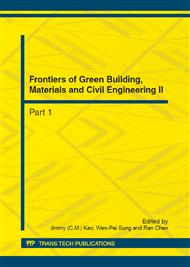p.958
p.964
p.970
p.976
p.980
p.984
p.989
p.995
p.1001
Numerical Investigation of Stress Concentration Phenomenon in Piled Embankment under Moving Train Loads
Abstract:
A numerical study is performed to investigate the stress concentration phenomenon in a piled embankment during high-speed train passage. In the numerical simulation, the loading of a moving train is first represented in the model as a series of time-varying equivalent concentrated forces vertically acting on the ballast surface, and the explicit finite element method (FEM) is then used to analyze the ballast-embankment-ground system subjected to the equivalent forces. The study shows that owing to the very high stiffness of the piles relative to the soft soil, a majority of the wave energy, which is generated by the passage of wheel axles, is concentrated to the improving piles and transferred down to the stiff soil stratum. By this stress concentration phenomenon, the soft soil surrounding the piles is subjected to less stress, and thus preventing undesirable dynamic effects that could be induced in the soft soil.
Info:
Periodical:
Pages:
980-983
Citation:
Online since:
August 2012
Authors:
Price:
Сopyright:
© 2012 Trans Tech Publications Ltd. All Rights Reserved
Share:
Citation:


